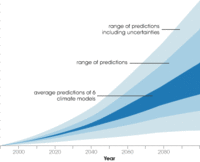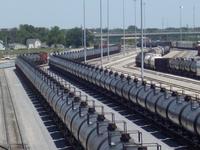-
Addressing international disaster resilience for U.S., partner countries
While national security efforts seek to prevent terrorist attacks, the United States an partner countries should also prepare to work together to mitigate the effects of a terrorist attack, should such efforts fail. A new report from the National Research Council (NRC) discusses the challenges around the United States and partner countries responding cooperatively.
-
-
Inexpensive seismic alert device may help Mexico City residents

Mexico City has been experiencing an unusually large number of tremors within the past few months, and though the country has one of the most advanced seismic alert systems in the world, many residents are unable to receive notifications before tremors occur. Mexican regulations limit the sale of government-issued earthquake alert receivers to one private company, but since the receivers cost an average of $310, most families are unable to afford them. Andres Meira, a 39-year-old architect, has designed an earthquake alert receiver, which costs only $54 at retail, which taps into the government’s earthquake alert frequency to notify its users of a pending earthquake.
-
-
Urban man-made drainage may increase risk of flooding
Installing drainage systems in developing towns and cities can cause water to reach rivers more quickly, potentially raising the risk of flooding, say scientists. They suggest that, in some cases, storm drains may do more to increase the risk of flooding than changes in the land surface.
-
-
Towns in northeast U.S. develop adaptation strategies for climate change
In many northeastern towns along the coast of the United States, local officials are attempting to identify and predict the effects of climate change which will occur over the next few decades. “You’re going to feel impacts. It’s a global issue with local effects…We don’t know exactly what’s coming, so let’s plan to be adaptable,” says a leader of a regional climate adaptation project.
-
-
Could devastating floods help Bosnians heal their war wounds?
The violent breakup of Yugoslavia in the 1990s and the subsequent war in Bosnia between 1992 and 1995 took the lives of more than 100,000 Bosnians and left two million homeless. Two decades later those survivors have been forced once again to abandon their homes — this time by floodwaters rather than bullets. The heaviest rainfalls ever recorded in the Balkans have led to catastrophic flooding in Bosnia and Herzegovina. Swelled by weeks of rain, the devastating floodwaters swamped more than 60 percent of the country last month, destroying more than 100,000 homes and displacing around 950,000 citizens. The floods also damaged vital infrastructure, destroyed industrial assets, and killed livestock. It is difficult to find a ray of light in this grim story of disaster, except this: Over the past weeks, media outlets have been flooded with stories and images of bravery, camaraderie, and community spirit where ethnicity suddenly became irrelevant. It remains to be seen how this feeling of camaraderie and community can be harvested to mobilize the people of Bosnia ahead of the general elections in October. Such a movement would have the potential to force corrupted political elites into the corner by draining them of their political capital.
-
-
New app helps kids in tornado-prone areas understand disasters
Kids growing up in tornado alley are used to bright, splotchy radar patterns moving across a television screen, and most know the difference between a tornado watch and warning. Do they understand, however, how to read and predict the weather based on radar images and forecasts? Researchers hope to remove the mystery around weather forecasting by speaking to kids in a language they could better understand — gaming.
-
-
Connecticut preparing for sea level rise, adapting to climate change

Earlier this year the University of Connecticut announced the creation of the Institute for Community Resiliency and Climate Adaptation. the Institute is designed to increase the resilience and sustainability of vulnerable communities and individuals along Connecticut’s coast and inland waterways as they are affected by the growing impact of climate change on the environment.
-
-
Feds, rail operators, Washington State embroiled in crude oil shipment disclosure dispute

Last month the U.S. Department of Transportation(DOT) ordered rail carriers with trains carrying crude oil to notify state officials in the states through which the trains pass about the volume, schedule, and routes of these trains. The amount of crude oil transported by trains has grown dramatically – from 6,000 carloads in 2005 to more than 400,000 carloads in 2013. The increase in the volume of crude oil shipping has been accompanied by a sharp rise in the number of accidents and derailments. DOT’s order was meant to allow states’ first responders to be prepared, but the railways treat shipping information as “security sensitive” and refuse to share it with states’ officials unless the information is distributed to emergency response groups for planning purposes only. Washington State says that state laws require that such information be made public.
-
-
All-natural mixture offers promising fire retardant
What sounds like fixings for a wizard’s potion — a dash of clay, a dab of fiber from crab shells, and a dollop of DNA— actually are the ingredients of promising green fire retardants invented by NIST researchers. Applied to polyurethane foam, the bio-based coatings greatly reduced the flammability of the common furniture padding after it was exposed to an open flame. Peak and average rates of heat release — two key indicators of the magnitude of a fire hazard — were reduced by 48 percent and 77 percent.
-
-
Nationwide effort launched to weather-harden Canadian cities
The frequency and magnitude of extreme weather events in Canada — from the floods in Southern Alberta and Toronto to the December ice storm in Central and Eastern Canada — are increasing, causing billions of dollars in damage to infrastructure, businesses and homeowners. Intact Financial Corporation and the University of Waterloo announced a national initiative involving the implementation of twenty climate change adaptation projects designed to reduce the physical, financial, and social impacts of extreme weather events in Canada.
-
-
Santa Monica to require retrofit of earthquake-vulnerable buildings
Last week, the Santa Monica City Councilauthorized city officials to hire engineering consultants to help identify buildings built before 1996 which could potentially be at risk in a major earthquake.. Owners of vulnerable buildings would be notified and provided recommendations on how to best retrofit their buildings to make them more resilient. Santa Monica will become the first city in California to require retrofitting for concrete, steel, and wood-frame. San Francisco last year required similar retrofitting, but only for wood apartment buildings.
-
-
Hurricanes with female names deadlier than male-named storms
In the coming Atlantic hurricane season, watch out for hurricanes with benign-sounding names like Dolly, Fay, or Hanna. According to a new study, hurricanes with feminine names are likely to cause significantly more deaths than hurricanes with masculine names, apparently because storms with feminine names are perceived as less threatening.
-
-
U.K. to face heavier, more frequent summer downpours, more destructive flash floods
Global warming could cause extreme summer downpours to become several times more frequent in the United Kingdom by 2100, a new study suggests. Its authors say this will likely lead to an increased risk of flash flooding, similar to the Boscastle floods of 2004 and the “Toon Flood” in Newcastle in 2012.
-
-
The five biggest threats to human existence

In the daily hubbub of current “crises” facing humanity, we forget about the many generations we hope are yet to come. Not those who will live 200 years from now, but 1,000 or 10,000 years from now. The word “hope” is appropriate because we face risks, called existential risks, which threaten to wipe out humanity. These risks are not just for big disasters, but for the disasters that could end history. These risks remain understudied. There is a sense of powerlessness and fatalism about them. People have been talking apocalypses for millennia, but few have tried to prevent them. Humans are also bad at doing anything about problems that have not occurred yet because of the tendency to overestimate the probability of events we know examples of, and underestimate events we cannot readily recall. There are some risks we cannot do anything at all about, such as gamma ray bursts that result from the explosions of galaxies. But if we learn we can do something, the priorities change.
-
-
The Pentagon integrates climate change into military planning
With the release of the National Climate Assessment last month, a clearer picture has emerged of the official policy-related interpretation of climate change data. The debate may still go on amongst civilian branches of government, and between the administration and its critics, the Pentagon, for some time now, has already been integrating climate change-related policies into its daily operations across all branches of the military.
-
More headlines
The long view
Using Drone Swarms to Fight Forest Fires
Forest fires are becoming increasingly catastrophic across the world, accelerated by climate change. Researchers are using multiple swarms of drones to tackle natural disasters like forest fires.
How Climate Change Will Affect Conflict and U.S. Military Operations
“People talk about climate change as a threat multiplier,” said Karen Sudkamp, an associate director of the Infrastructure, Immigration, and Security Operations Program within the RAND Homeland Security Research Division. “But at what point do we need to start talking about the threat multiplier actually becoming a significant threat all its own?”
